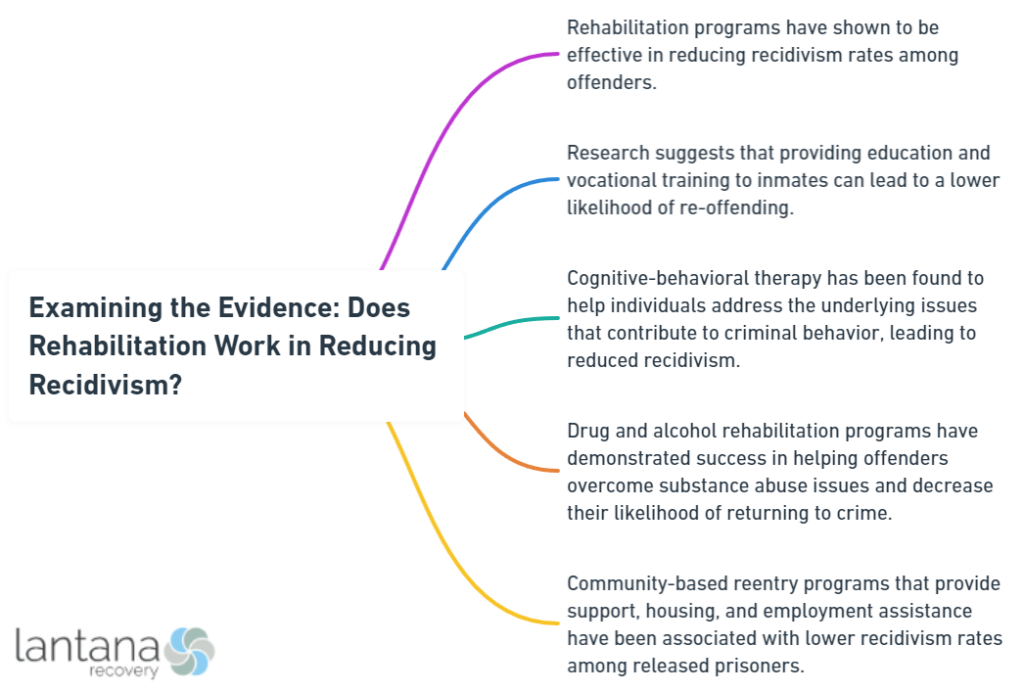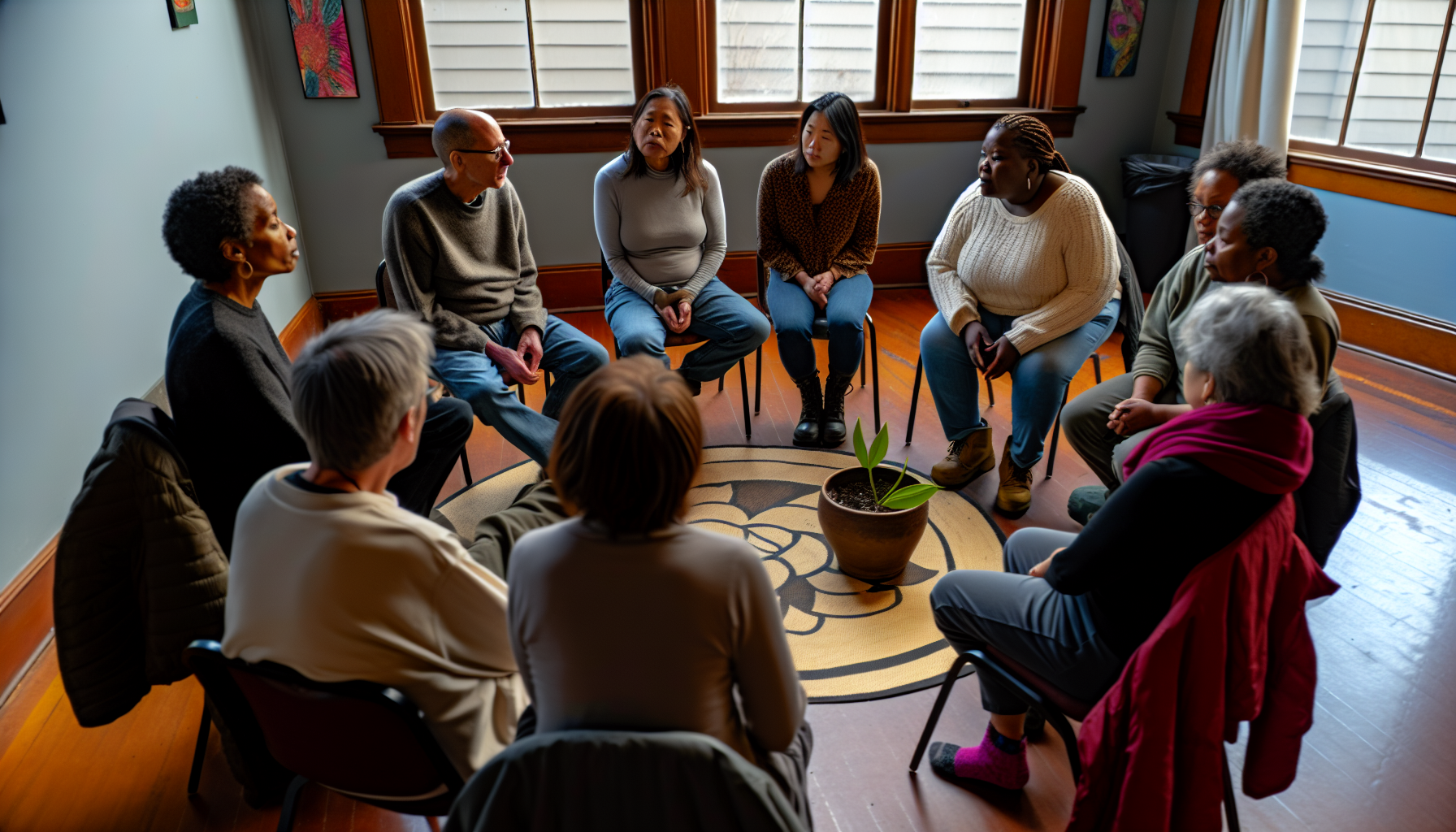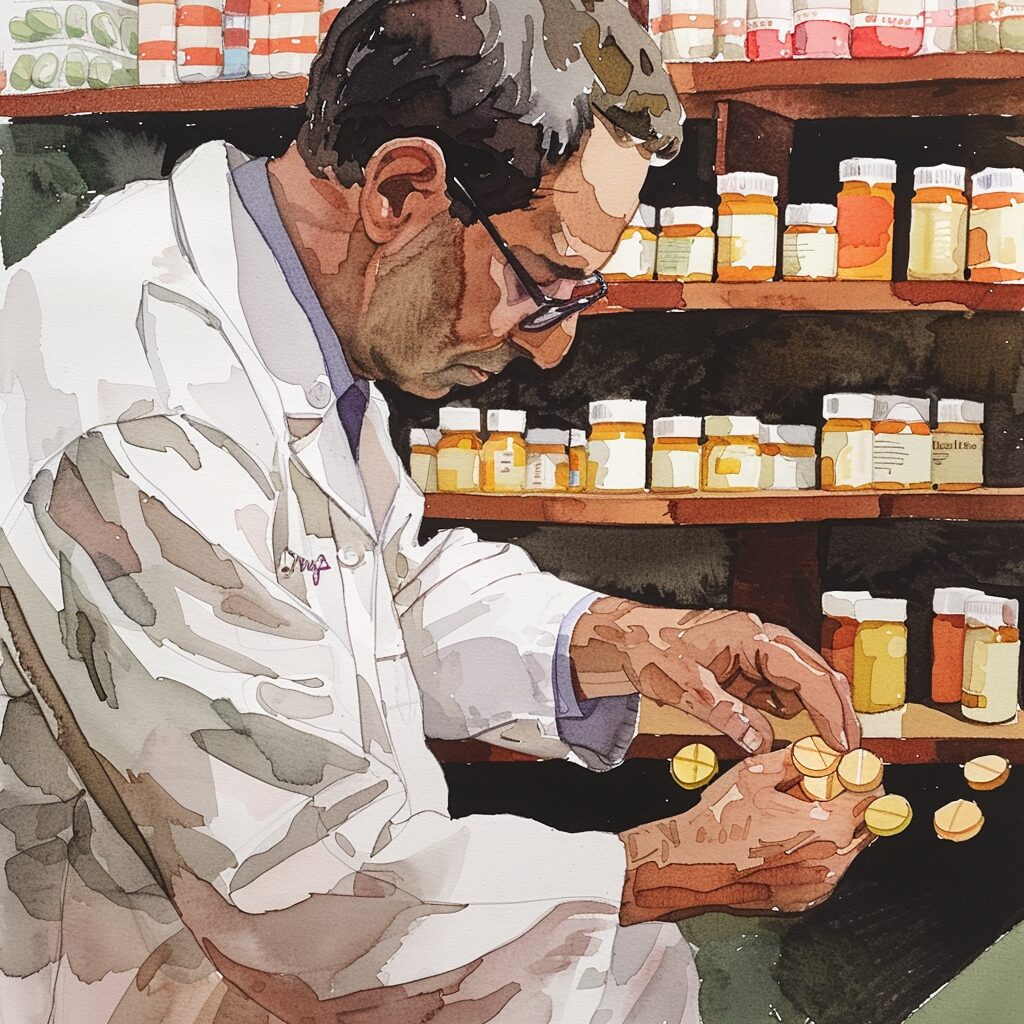Does rehabilitation work in reducing reoffending? Analysis of rehabilitation programs reveals that success is contingent on specific factors. In this article, we offer a critical review of the evidence, scrutinizing whether varying rehabilitation strategies effectively lower recidivism. We will explore how custom programs, mental health support, and education are integral to these outcomes, and the obstacles that may diminish their impact. Without the fluff, this piece aims to shed light on what truly makes for effective rehabilitation in the context of recidivism.
Key Takeaways
- Rehabilitation programs greatly reduce recidivism when personalized and include education, vocational training, substance abuse treatment, and mental health services, yet underutilization of treatments like MAT persists.
- Effective rehabilitation is often hindered by inadequate funding, limited resource access, and inconsistencies in program quality across correctional facilities, leading to challenges in reducing incarceration and recidivism cycles.
- Comparative international models, particularly Norway’s rehabilitative approach, highlight how investing in proper rehabilitation services can enhance safety, employment outcomes, and lead to significant societal cost savings.
The Effectiveness of Rehabilitation Programs
When examining correctional facilities and their roles, a shift in focus is palpable: from punitive containment to rehabilitative transformation. Undeniably, rehabilitation programs significantly impact recidivism rates. Studies have demonstrated a significant deterrent effect, with the probability of reoffending reduced by impressive margins. However, the effectiveness of rehabilitation programs in reducing recidivism is greatly amplified when they are tailored to the individual, considering factors such as age, race, and geographic location.
Furthermore, reentry programs that include volunteer mentoring have shown positive impacts, underscoring the value of personalized support in rehabilitation efforts.

Education and Vocational Training
Education and vocational training form the bedrock of rehabilitation. These services play a pivotal role in providing individuals with the requisite work skills for substantial post-release employment. Norway’s focus on job skills enhancement is a testament to the power of vocational training in crime reduction, particularly among those unemployed before incarceration.
Youth and young adults, who form a significant portion of the incarcerated, benefit substantially from educational programs designed to address their unique needs, as seen in specialized initiatives in Ohio and Georgia.
Substance Abuse Treatment

There is an undeniable link between substance abuse and criminal behavior, evidenced by the arresting fact that 68% of drug-involved offenders are rearrested within three years of release. Effective treatment models, such as drug courts and diversion programs, have shown promise in breaking this cycle, reducing both drug use and recidivism. While interventions are crucial at all stages of the criminal justice system, they are particularly impactful during the transition back into the community, highlighting the pivotal role of substance abuse treatment in rehabilitation strategies.
Despite this, the utilization of medication-assisted treatment (MAT) for substance use disorders remains significantly underused within the correctional system.
Mental Health Services

Integral to rehabilitation is mental health care, with mental health services being some of the key interventions, including mental health counseling. These services include:
- Routine outpatient treatment, which is shown to lower the arrest probability among individuals with severe mental illness.
- Participation in mental health courts, which has a mitigating effect on violent offending and recidivism.
- However, not all interventions have equal impact. For example, prescription of certain medications at the time of release has not correlated with a reduction in recidivism rates.
Interestingly, inmates with mental illness who do not have a substance use disorder exhibit recidivism rates similar to those without any such disorders.
Alcohol Rehab South Carolina
When seeking alcohol rehab in South Carolina, individuals have a range of options to consider. South Carolina offers various treatment facilities and programs tailored to address alcohol addiction effectively. These rehab centers provide comprehensive services, including detoxification, counseling, therapy sessions, and aftercare support. Patients can choose from inpatient or outpatient programs depending on their needs and preferences. With a focus on holistic healing and personalized care, alcohol rehab in South Carolina aims to help individuals overcome addiction and regain control of their lives. Whether someone is struggling with mild or severe alcohol dependency, seeking professional help in South Carolina can be the first step towards a sober and fulfilling future.
Challenges and Limitations of Rehabilitation
Despite the clear benefits of rehabilitation, the journey towards achieving effective rehabilitation is riddled with obstacles. Even as incarceration deters future crime, it can also lead to recidivism if not supported by proper rehabilitation strategies.
The varied quality and consistency of rehabilitation programs across correctional facilities can mean the difference between a successful reintegration and a return to the prison system.
Inadequate Funding
Inadequate funding presents a major hurdle to rehabilitation. Penitentiary systems often operate on budgets that are a mere fraction of a country’s GDP, resulting in a chronic shortage of funds for rehabilitation activities. The majority of available funds are consumed by infrastructure and personnel costs, leaving little for rehabilitative services.
This lack of financial prioritization results in environments that are far from conducive to breaking the cycle of incarceration and recidivism.
Access to Resources
Overcrowding in prisons and decaying facilities significantly hinder access to crucial resources for the prison population like:
- Adequate healthcare, which is vital for the successful implementation of rehabilitation programs
- Basic necessities, forcing inmates to rely on external organizations
- Sufficient funds for rehabilitation programs, with a significant portion being allocated to staffing and infrastructure
- Stable prison staff, with high turnover rates and unfilled positions
- Sufficient training for correctional staff
These systemic deficiencies and challenges undermine efforts to provide effective rehabilitation.
Rural jurisdictions face additional constraints, highlighting the need for community-tailored reentry programs.
Program Quality and Consistency
The effectiveness of rehabilitation programs is strongly tied to their quality. High-quality programs adhering to evidence-based practices have shown greater success in reducing recidivism. Following models with proven efficacy, such as those vetted by the Washington State Institute for Public Policy, can lead to significant cost savings and public safety benefits,.
The establishment of national minimum standards for correctional education and training is crucial in delivering these programs effectively. Challenges such as mandatory overtime and staff shortages call for a paradigm shift from a punitive model to a human-services model to enhance the effectiveness of rehabilitation.
What is Drug Addiction
Drug addiction, often referred to as substance use disorder, is a complex condition characterized by compulsive drug-seeking behavior despite harmful consequences. Individuals with drug addiction experience an overwhelming urge to use substances, which can lead to significant impairment in various aspects of their lives, including work, relationships, and health. This disorder is not simply a matter of willpower or moral character but involves changes in the brain’s structure and function, particularly in areas related to decision-making, impulse control, and reward processing. Addiction can develop with the use of various substances, including but not limited to alcohol, opioids, stimulants, and sedatives. Treatment for drug addiction typically involves a combination of therapies, including behavioral interventions, counseling, and, in some cases, medication-assisted treatment, aimed at addressing both the physical and psychological aspects of the condition.
Rehabilitation Models Around the World

A look at the worldwide prison reform landscape unveils a range of diverse and innovative rehabilitation strategies. Countries like Norway, Sweden, and Germany have developed prison systems that emphasize rehabilitation, focusing on positive community life and minimum intervention, thus easing reintegration upon release. Their experiences suggest that an investment in rehabilitation can lead to cost savings and crime reduction, providing valuable lessons for countries struggling with high recidivism rates.
Norway’s Emphasis on Rehabilitation
Norway stands out with a criminal justice system that prioritizes rehabilitation over punishment. Its prisons are well-resourced, avoiding overcrowding and enhancing personal safety. Well-funded programs contribute to increased employment and decreased recidivism among formerly unemployed inmates.
The Norwegian model demonstrates that investing in a rehabilitative prison environment can result in long-term savings and better employment outcomes post-release. This comparison with more punitive systems, such as that of the United States, shows the potential of rehabilitation in reducing crime.
Other Notable Examples
Sweden’s approach to rehabilitation is grounded in evidence-based programs that undergo scientific evaluation to ensure their effectiveness,. These programs not only have a clear model of change but also require site accreditation, reflecting a structured approach to rehabilitation and a commitment to quality.
Balancing Rehabilitation and Incarceration
An approach to criminal justice that combines both rehabilitation and incarceration can decrease recidivism rates and promote employment among individuals who were previously unemployed. Such an approach ensures that incarceration serves as a deterrent to future criminal behavior while simultaneously providing programs that improve employability and reduce the likelihood of reoffending.
Properly accounting for individual differences is crucial in evaluating prison’s criminogenic effects, revealing that when done correctly, prison can prevent future crimes.
Diverting Non-Violent Offenders
Channeling non-violent offenders towards rehabilitation programs instead of prison poses an encouraging alternative to conventional incarceration. Programs like New York’s Drug Treatment Alternative-to-Prison (DTAP) have proven successful in lowering rates of rearrest, reconviction, and reincarceration for high-risk drug offenders.
The success of such programs points to the benefits of rehabilitating offenders, which can result in reduced recidivism and further criminal behavior prevention.
Tailoring Programs to Individual Needs
The identification of an offender’s criminogenic needs is a critical first step in crafting an individualized reentry plan. By addressing these needs, the criminal justice system can deliver services that are finely tuned to the offender’s specific circumstances. Rehabilitation programs that focus on the highest-risk and highest-need individuals have been particularly effective in curbing reoffending behavior, underscoring the importance of tailored rehabilitation efforts.
Why Do People Drink Alcohol
“Why do people drink alcohol?” is a question with multifaceted answers, as motivations vary greatly among individuals. For some, alcohol serves as a social lubricant, easing social anxieties and enhancing enjoyment in social gatherings. Others may turn to alcohol to cope with stress or emotional distress, seeking temporary relief from life’s pressures. Cultural and societal influences also play a significant role, with alcohol often being deeply ingrained in rituals, celebrations, and traditions. Additionally, biological factors such as genetics and brain chemistry can contribute to alcohol consumption patterns. Moreover, marketing and availability contribute to the widespread acceptance and normalization of alcohol consumption in many societies. Understanding these various factors is crucial in addressing alcohol-related issues and promoting healthier drinking behaviors.
The Role of Community and Family in Rehabilitation
In the rehabilitation process, the role played by the community and family is invaluable. Such support can significantly improve outcomes for incarcerated individuals during their reentry into society, affecting their well-being, employment opportunities, and recidivism rates.
Restorative Justice Programs

Restorative justice programs encapsulate a community-focused rehabilitation approach, with a priority on strengthening social ties and accountability. Through restorative justice conferencing, offenders and victims can engage in direct communication, allowing an exchange of perspectives and fostering a platform for accountability and potential restitution.
Family Involvement
The involvement of family constitutes a fundamental element for successful reentry and rehabilitation. Support from family members, including housing, employment, and emotional backing, is fundamental to the reintegration process for released prisoners.
Post-release, improvements in family relationships are common, with former inmates placing a higher value on their family connections as a key factor in avoiding recidivism.
Summary
The journey through the rehabilitation landscape reveals a compelling argument for the adoption of comprehensive and tailored rehabilitation strategies. The evidence underscores the effectiveness of rehabilitation in reducing recidivism rates, while the global examples offer inspiring models for prison reform. However, the challenges of inadequate funding, resource allocation, and program quality must be addressed to fully realize the potential of rehabilitation. It is clear that a balanced approach, supported by community and family, can create a more just and effective criminal justice system.
Frequently Asked Questions
Why is rehabilitation important in prisons?
Rehabilitation in prisons is important because it can help inmates learn new skills, find employment, and address underlying issues which can lead to a lower rate of recidivism, benefiting both the individual and society.
Can criminals change for the better?
Yes, with significant effort and determination, even serious offenders can undergo positive transformation and learn to become good citizens. However, this transformation requires a deep exploration of their suffering and a change in their thinking about others and themselves.
Why is rehabilitation effective?
Rehabilitation is effective because it leads to improved public safety by reducing the likelihood of former inmates committing crimes and posing a danger to society.
How successful is rehabilitation for criminals?
Rehabilitation programs, particularly cognitive-behavioral programs, have been found to consistently reduce recidivism by 15 percent or more in prisons, with some leading to reductions of closer to 30 percent. This suggests that rehabilitation can be quite successful in reducing criminal behavior.
What are the direct effects of rehabilitation programs on recidivism rates?
Rehabilitation programs have been shown to significantly reduce the likelihood of reoffending, with tailored programs addressing specific individual needs being particularly effective in reducing recidivism rates. Implementing tailored rehabilitation programs can have a direct and positive impact on recidivism rates.








